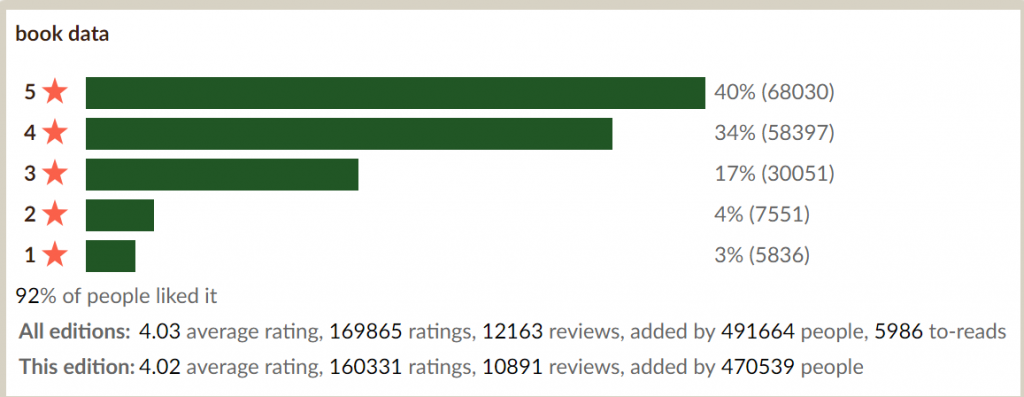In his disability memoir Cockeyed, Ryan Knighton details his experiences with love, travel, work, and loss as he descends into blindness. Through Knighton’s interactions with society as a blind person, we gain insight on how society perceives, acts, and reacts to Knighton’s disability. At the same time, we see how Knighton has to present himself to society due to his blindness and the expectations that come with it.
The “I” and the “Me”
The presentation of the self as a result of society’s expectations is best understood through American sociologist George Herbert Mead’s theory of the “Self”, which can be attributed to two components: the “I” and the “Me” (Mead 320). According to Mead, the “Me” comprises of the socialised aspect of an individual, which refers to the expectations and attitudes of society that an individual internalises. On the other hand, the “I” refers to the individual’s responses and actions as a result of these values he/she has internalised from the “Me”. Essentially, the “Me” tells an individual how to act and respond as the “I”.
In Cockeyed, Knighton’s “Me” tells him how people recognise and respond to him as a blind man. For instance, when he first uses his cane, Knighton starts to recognise the various ways people respond when they encounter a blind person on walkways: Some are stumped and remain rooted in his way, while others panic and sidestep at the last moment (72). These expected responses come to comprise Knighton’s “Me”, and allows his “I” to react accordingly. For Knighton, he finds this amusing and “too fun to cause that much trouble” (72) and as such, uses his cane to elicit such responses from society. Likewise, Knighton’s use of his cane allows the public to identify him as a blind person, and this tells his “Me” that people will take extra caution around him, and as a result, his “I” is able to “take less care” (73) and “take more risks” (74).
Cockeyed also explores the “Me” and “I” of society with regards to disability and disabled people. The actions of society’s “I” helps us understand the attitudes assumed by society’s “Me”. When Knighton narrates his story of being mugged, and then let off with an apology when the robbers discover that he is blind (94), he shows how society’s “Me” sees blind people as weak and deserving of pity. In another story, Knighton’s experience with a blind man’s wife’s over-eagerness to help shows how the “Me” views blind people as helpless (227). Through these experiences, Knighton finds society’s attitudes towards the disabled troubling: in assuming all of them as weak and helpless, society inevitability discriminates and marginalises disabled people, even if it were for good intentions. Knighton, in his story about being mugged, comments that he felt a loss of dignity because “Discrimination feels like discrimination, even when it’s for the best”. He also writes “I wanted to lose. I wanted to lose like everybody else in order to keep that bit of dignity” (94). Knighton shows how society’s “Me” has internalised disabled people as second class, and challenges that this notion has to change as it is discriminatory.
Final Thoughts
Instances of the “I” and the “Me” are found throughout Cockeyed. By looking out for these presentations of the self from the perspective of a disabled person and the society that acts in response to the disabled, we can better understand how hidden rules and behavioural norms are shaped by the society around us. Knighton’s narrative offers us a rare and much-needed perspective that helps us understand how constraints of disability are often a result of social constructs. With this knowledge, we can work towards eliminating these stigmas to better accommodate the disabled.
P.S Learn more about Mead’s “I” and “Me” at the Stanford Encyclopedia of Philosophy
P.P.S Check out Merial’s blog where she explores how Knighton’s disability memoir challenges the marginalising attitude of society.
References:
Mead, George Herbert. “Self.” Classical and Contemporary Sociological Theory: Text and Readings. By Scott Appelrouth and Laura Desfor. Edles. Los Angeles, CA: Pine Forge, 2008. 311-21. Print.
Knighton, Ryan. Cockeyed: A Memoir. New York: Public Affairs, 2006. Print.
Aboulafia, Mitchell. “George Herbert Mead.” Stanford University. Stanford University, 13 Apr. 2008. Web. 16 Oct. 2016. <http://plato.stanford.edu/entries/mead/#IMe>.
